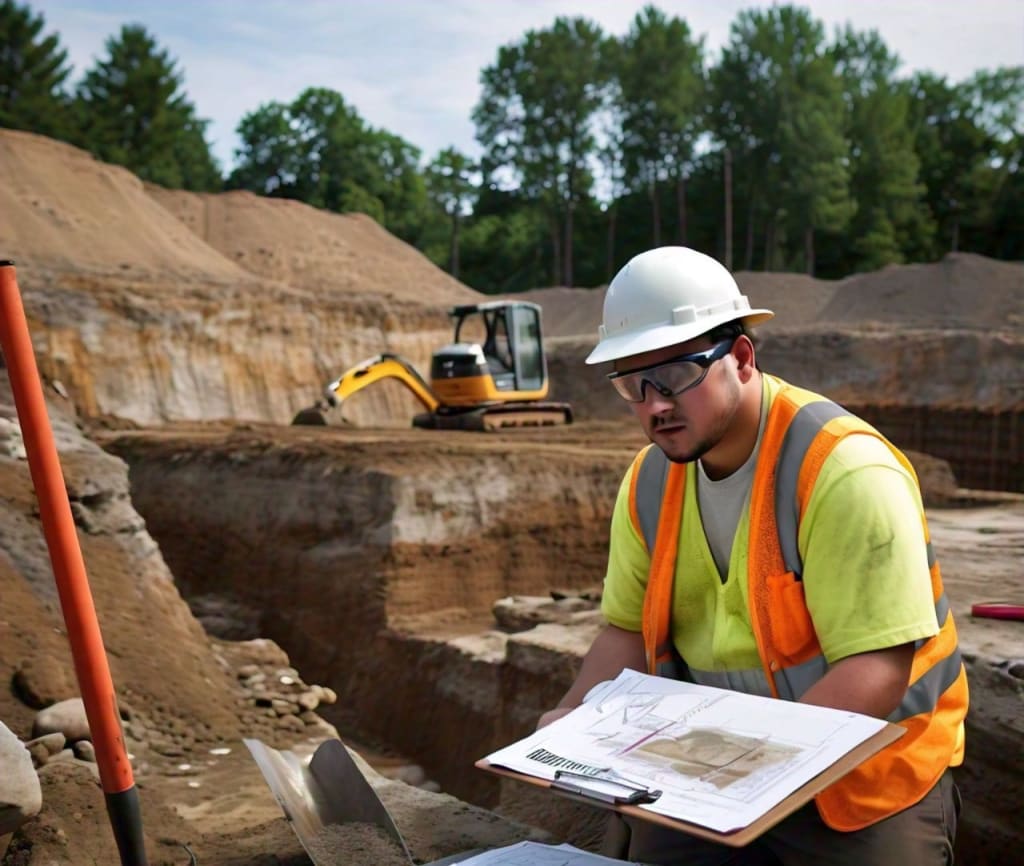Project Geotechnical Engineer Experience for Large-Scale Dope
Project Geotechnical Engineer Experience for Large-Scale Dope
Blog Article
How Consulting Engineers Enhance Geotechnical Engineering Projects: Insights Into Their Expertise, Methodologies, and Collaborative Approaches
Consulting designers are crucial in enhancing geotechnical engineering tasks, applying their specialized knowledge to browse the complexities of subsurface conditions. Their techniques include a variety of site examination techniques, including Requirement Penetration Tests (SPT) and Cone Infiltration Tests (CPT), which educate crucial decisions throughout the design and construction stages. Their collective strategies foster communication among varied project stakeholders, inevitably shaping the task's trajectory. As we examine the complex duties these experts play, it comes to be clear that their payments prolong past technical proficiency, motivating a more detailed consider the effects for task success.
Function of Consulting Engineers
The know-how of consulting engineers in geotechnical design is essential to the effective execution of building and construction projects. These experts play a pivotal role in assessing soil and rock homes, which are important elements affecting layout and building and construction decisions. By conducting extensive site investigations, seeking advice from engineers accumulate essential information that informs the design process, making certain tasks are improved stable and appropriate ground.
Consulting designers likewise offer important insights right into danger administration (geotechnical geologist). They identify prospective geotechnical dangers, such as landslides, dirt liquefaction, and settlement problems, making it possible for stakeholders to execute effective mitigation methods. Their knowledge aids in enhancing structure layouts, which can result in substantial cost financial savings and improved safety and security
Additionally, getting in touch with designers function as an important link between task proprietors, engineers, and contractors. Their capacity to convert intricate geotechnical information into actionable suggestions fosters collaboration and promotes notified decision-making throughout the job lifecycle. This multidisciplinary approach not only boosts project performance however likewise makes certain conformity with regulative requirements and best techniques.
Secret Approaches in Geotechnical Design

One main technique is site investigation, which involves conducting area examinations and research laboratory analyses to gather information on subsurface problems. Methods such as Criterion Penetration Testing (SPT) and Cone Penetration Screening (CPT) are commonly used to review soil stratigraphy and strength. In addition, geophysical techniques, consisting of seismic and electric resistivity studies, supply non-invasive means to analyze subsurface characteristics.
One more crucial approach is mathematical modeling, which makes it possible for designers to simulate numerous scenarios and anticipate exactly how soil-structure interactions will act under various loading problems. Limited Component Analysis (FEA) is an usual approach used in this context.
Additionally, the layout of foundations, retaining structures, and earthworks counts heavily on these methods - geotechnical geologist. By integrating advanced logical tools with field data, speaking with engineers can establish customized solutions that deal with certain job obstacles, ultimately contributing to the stability and security of building and construction tasks
Relevance of Soil Evaluation
Dirt evaluation acts as a foundational element in geotechnical engineering, providing necessary understandings right into the physical and chemical homes of dirt required for efficient building preparation. Understanding dirt features is vital for identifying its load-bearing capability, drainage actions, and capacity for settlement or instability. In-depth dirt investigations, consisting of tasting and lab testing, help recognize specifications such as soil kind, dampness web content, density, and shear toughness.
These evaluations educate the choice of ideal building strategies and materials, inevitably affecting project security and durability. Cohesive soils may require different foundation layouts compared to granular soils, necessitating tailored engineering services. Soil analysis help in recognizing impurities that can posture threats to human wellness or the setting, permitting for the advancement of reduction approaches.
Including dirt evaluation into the onset of task development helps to minimize unexpected challenges, ensuring that designers can prepare for and attend to potential concerns prior to they intensify. By establishing an extensive understanding of the site conditions, getting in touch with designers can enhance style efficiency and minimize prices, consequently boosting the total success of geotechnical design jobs.
Joint Strategies in Tasks
Successful geotechnical jobs commonly hinge on collective techniques that combine diverse expertise from numerous techniques. Reliable cooperation among getting in touch with designers, rock hounds, environmental researchers, and building specialists is vital for addressing complicated obstacles and enhancing task outcomes. By leveraging the unique skills and understanding of each employee, projects can profit from a holistic understanding of the site problems, regulatory requirements, and design constraints.
Routine interaction and interdisciplinary meetings assist in the sharing of understandings and foster a culture of synergy. These collaborative efforts make it possible for the identification of prospective threats early in the project lifecycle, enabling timely reduction strategies. Furthermore, including feedback from stakeholders, including regional neighborhoods and governing agencies, guarantees that all viewpoints are taken into consideration, enhancing project acceptance and compliance.
Furthermore, the assimilation of innovative technologies, such as Geographic Info navigate to this website Equipment (GIS) and Building Information Modeling (BIM), more boosts cooperation. These tools enable the real-time sharing of data and visualization of geotechnical conditions, promoting informed decision-making. Ultimately, a collaborative technique not just simplifies task implementation however likewise lays the foundation for innovative solutions to complex geotechnical engineering challenges.
Influence On Task End Results

Consulting engineers use sophisticated methodologies such as danger assessment and predictive modeling, which enhance the precision of task forecasts. Their capacity to integrate ingenious modern technologies, like geotechnical instrumentation and data analytics, even more refines the style and building and construction processes. Consequently, tasks experience improved effectiveness, lowered prices, and lessened delays.
In addition, fostering efficient interaction and collaboration among staff member improves analytic capacities. When challenges occur, a joined front enables swift identification of solutions, protecting against prospective setbacks. Ultimately, the collective initiatives of getting in touch with designers contribute to greater quality results, making sure that tasks fulfill both regulative standards and client expectations.
Verdict

Report this page